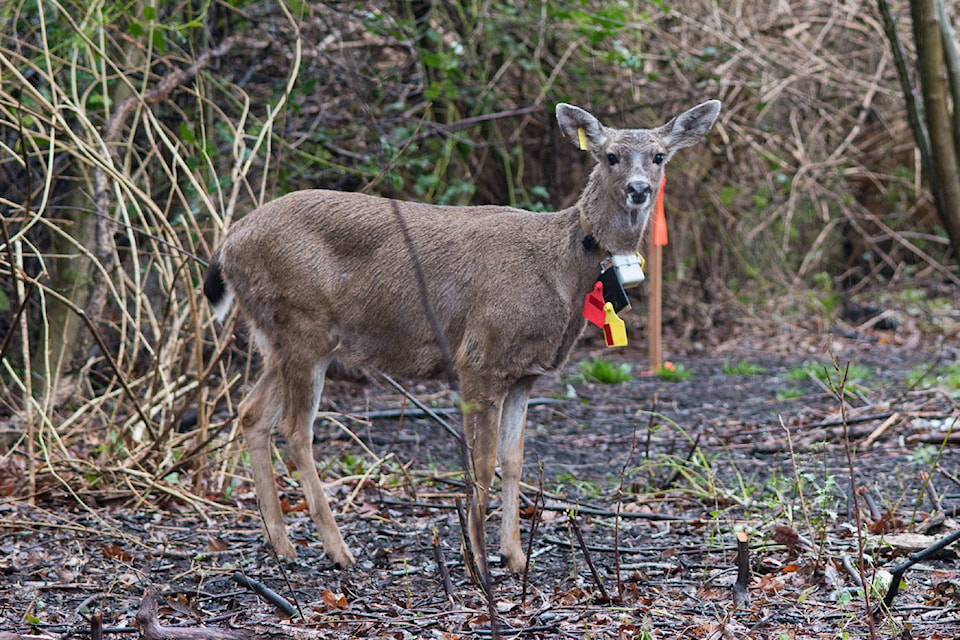Oak Bay residents may be noticing some new bling on a few select deer in the community as Urban Wildlife Stewardship Society captures and collars 20 female deer in Oak Bay as part of their UWSS Deer Plan.
The research team began collaring on Feb. 28, heading out in the early morning hours, before the streets got busy, to find and capture the does. The team is halfway through the process now having captured and collared 10 does.
“Because of the dangly bits on the collar, people are probably concerned about them getting entangled. But because of the size and lightweight nature of the collar and because the tags themselves are made of plastic and are quite flexible, it would be impossible for a deer to get entangled. The tag would bend and give way long before the deer got entangled,” said Steve Huxter, project manager.
The collars are GPS radio collars that allow the research team to track the does movements though satellites. They are the lightest-weight collars on the market (3 lbs) and have a timed drop-off mechanism. When the collars are put on, the timer starts and the collars drop off on their own after two years.
“We will be getting transmissions for two years hopefully for all 20 does,” said Huxter.
The collaring is a phase of the UWSS project to develop and implement a deer reduction plan using fertility control. The plan is to count, document travel and eventually inoculate local female deer with immunocontraceptives.
This phase of the project is a combination of tracking the does movements through the GPS collars and also identifying deer through a camera trap survey. There are 37 motion and infrared cameras in place around the community that aid the team with density and population estimates by photographing not just the collared deer but all deer that pass by. Each collared doe has a unique colour combination of plastic ID tags attached to her collar to allow for easy identification in the photos.
The information collected will give the municipality a better understanding of deer densities, range, population dynamics and dispersal rates and inform future management decisions.
To attach the collars, the does are sedated and assessed through a brief physical exam before being tagged and collared. The whole process from the initial sedation to waking up and being on her feet again takes approximately half an hour, with no side effects.
The teams hope is to start the inoculation process in late July or early August. They will apply for a permit to dart the 20 does they collared to inoculate them with the contraceptive vaccine.
“It is a test trial. Darting with the vaccine hasn’t been done in Canada before so this is a trial to see how it works. When the next fawning season comes around, we can see if a tagged deer has fawns or doesn’t have fawns,” said Huxter.
The overall goal of the management plan is to gradually reduce the number of urban deer using a science-based, non-lethal approach.
RELATED: Experts to capture and collar 20 female deer in Oak Bay starting this month
RELATED: Oak Bay wants more doe from province
RELATED: UWSS lays out deer plan for Oak Bay (2016)
RELATED: Oak Bay plans to apply for provincial cash to further deer contraception plan
RELATED: Oak Bay scores provincial funds to count deer
keri.coles@oakbaynews.com
Follow us on Instagram Like us on Facebook and follow us on Twitter.
